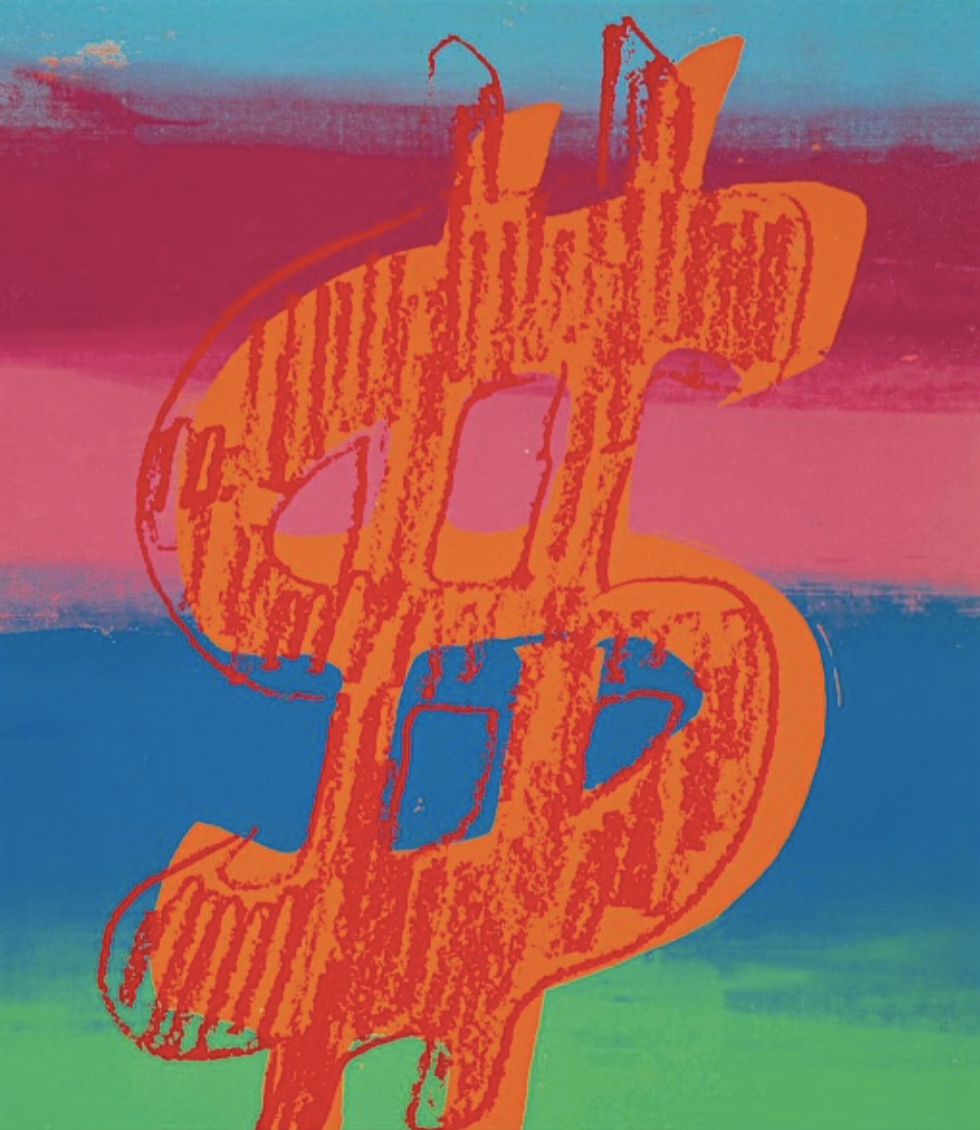Andy Warhol, the father of Pop Art, is one of the most, if not the most important and influential artists of the 21st century. His innovative work refers to mass production, advertising, and celebrity culture, reflecting and reshaping the visual language of postwar America.
With Dollar Sign, a total emblem of capitalism and consumer desire, Warhol transforms the symbol of money into bold, seductive iconography. More than just a pop image, the work captures the artist’s wry commentary on the power of branding, wealth, and the American dream.
Yet, Dollar Sign resonates today more than ever. As society accelerates toward digital currencies and intangible economies, where Bitcoin and other digital currencies challenge the relevance of paper money, Warhol’s canvas becomes a time capsule and a prophetic symbol. It marks a moment when cash ruled the cultural imagination, even as we now move toward a future where that symbol may become obsolete. In this way, Dollar Sign is both historic and timeless. A pop relic that continues to ask provocative questions about value, permanence, and the price of fame.
Warhol was widely regarded as the bellwether of the art market. He continues to dominate headlines, with works like Shot Sage Blue Marilyn (1964) selling for $195 million, the highest auction price ever achieved for an American artist. In 2015, a Dollar Sign canvas sold for nearly $15.7 million at Sotheby’s, underscoring the lasting appeal of his visual language.
Andy Warhol’s work is represented in virtually every major public and private collection of contemporary art around the world. From the MoMA, to the Whitney Museum in New York, to the Tate in London, the Centre Pompidou in Paris, and The Broad in Los Angeles, Warhol's influence is foundational.


